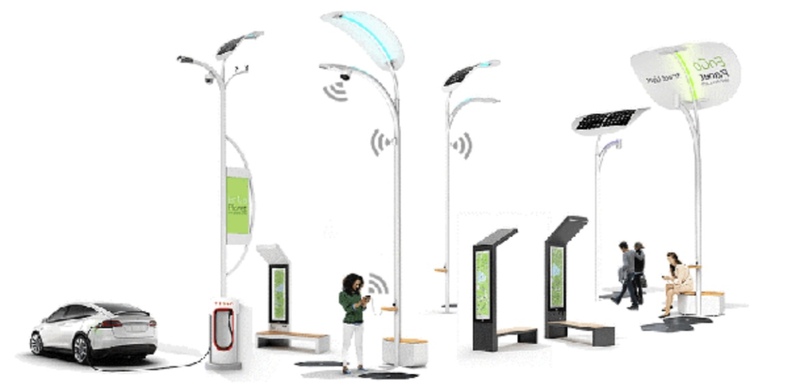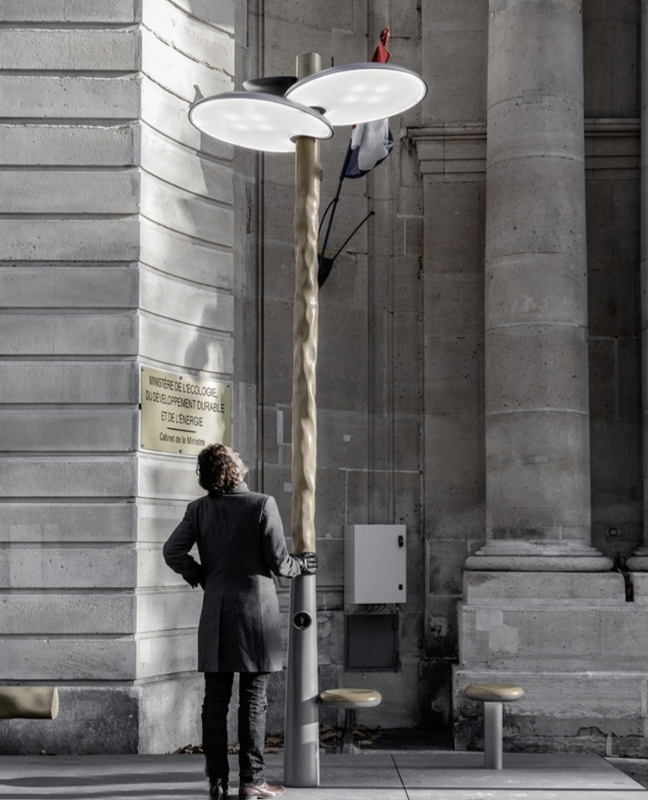Smart City Option: Smart Pole
Smart Pole is simply a solar-powered lamppost that may happen to provide an electronic display of the weather. However, according to Engineer Jame Lapham with PMG Corporation, who specializes in the installation of 5G telecommunication devices, a Smart Pole can be so much more.
A true Smart Pole must be one that incorporates a variety of the elements listed below. They're the true representation of what a Smart Pole should actually integrate into the telecommunication network of a city. The following list is not exhaustive, and may include other components as well:
- Energy-efficient LED lighting, signage, and street illumination
- A concealed, sophisticated and modern camera system capable of monitoring license plates, human faces, and other important surveillance aspects. This camera should additionally be wired into a larger security information database
- Smart Pole should serve as a Wifi Hotspot
- Weather and Air quality monitoring systems linked to a larger weather databases
- Electric Vehicle Chargers (EVC)
- LED Informational display to display relevant up to date locational information
These combined elements are that constitute a Smart Pole.
How does a Smart Pole work?
A smart pole works by using small-cell base stations that are housed within the pole. Since they work within a city street lighting infrastructure, smart poles make it possible for city planners to densify urban network capacity and coverage at their own pace with minimal disruption.
Balance Between Nature and Technology
In Paris, France there is a new biolific-inspired lamp post appearing in the city. Mathieu Lehanneur is a French industrial designer who created the "Clover: mixes energy function and materials by combining lamp posts and seating, with wood and solar panels.
The Power Balance
A Smart Pole technology is the use of Automated Enforcement for two uses: Traffic Rules and Toll Collection. These two types of automated enforcement for traffic regulations took over the responsibility of law enforcement in some locations, where manpower could be redirected, as cameras can be enabled for continuous administration.

